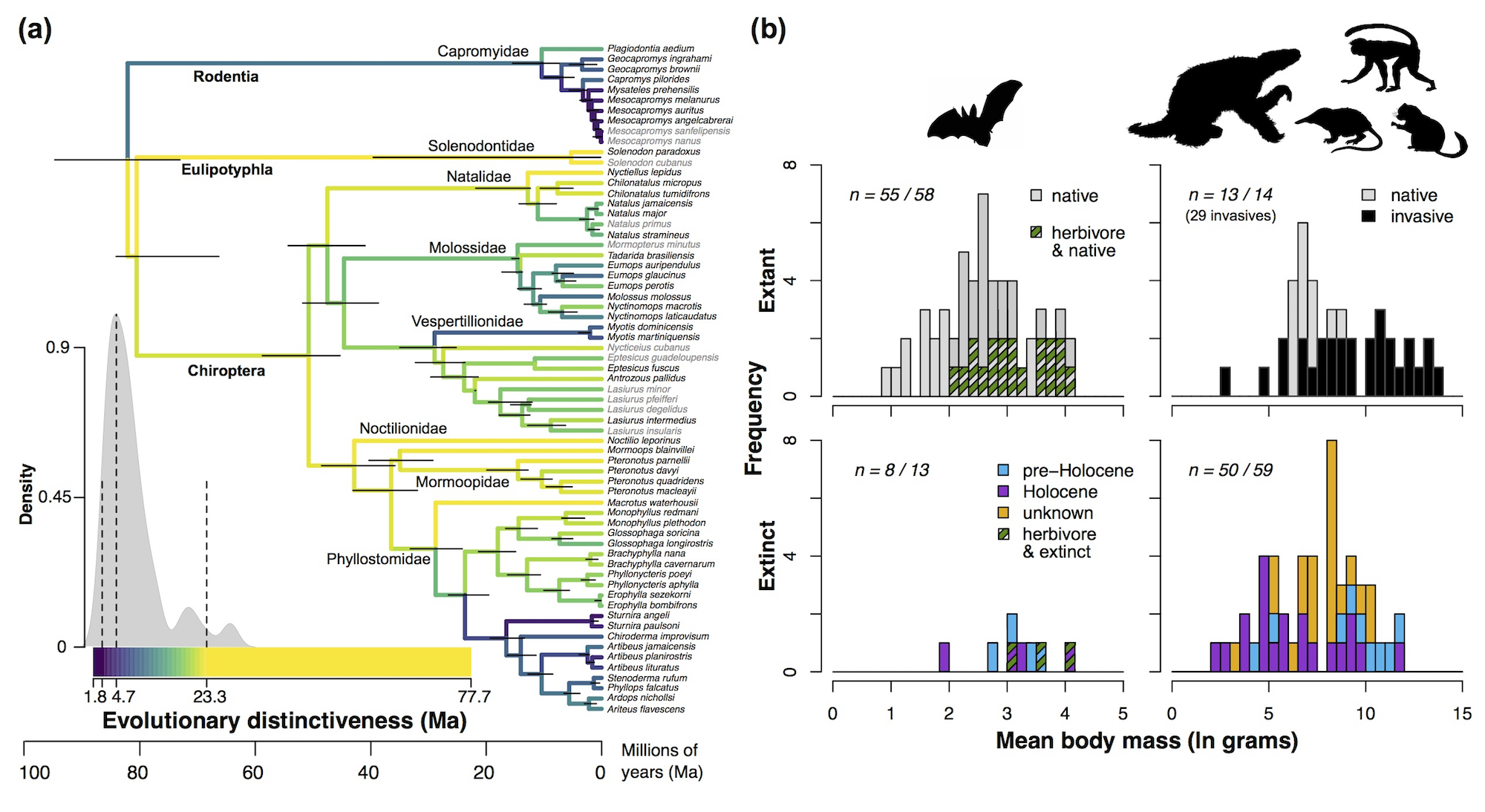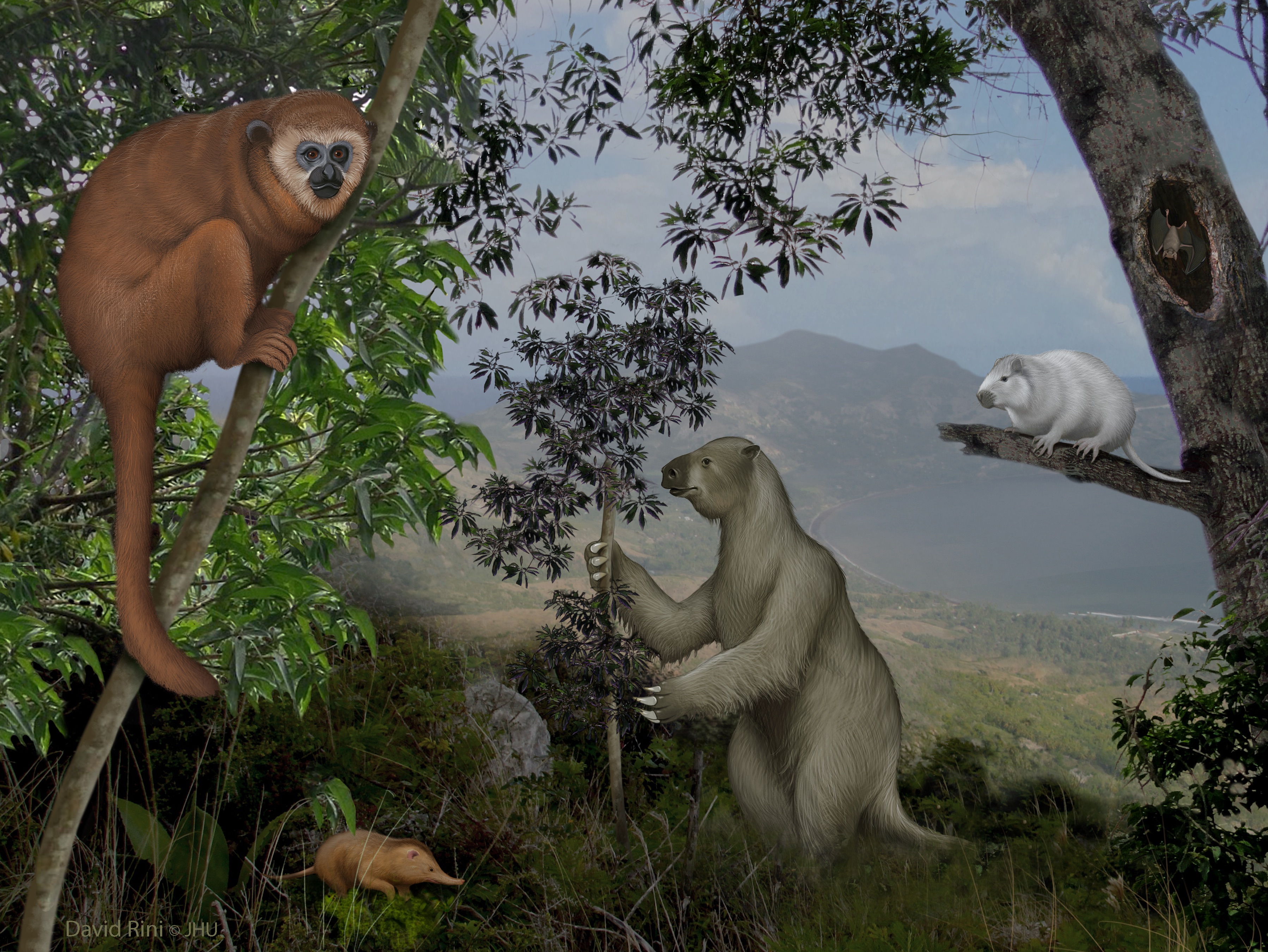Caribbean Extinctions Annual Review Published
Excited to say that our paper is set to be released in print on Nov 2: “Anthropogenic extinction dominates Holocene declines of West Indian mammals.” Annual Review of Ecology, Evolution, and Systematics. Online early, link here.
In this article, we ask if the arrival of humans on a per-island basis across the Caribbean was concordant with native mammal last appearances in the fossil record, a fauna which included >130 species as recently as 10,000 years ago but now has fewer than 75. Our answer is yes, probabilistically.
Entire lineages of native sloths, monkeys, and shrews were entirely wiped out in these extinctions, and native rodents and bats were also hit hard. Our study is the first to do a meta-analysis of radiocarbon dates to assess the temporal concordance of humans with extinctions— and in so doing is the first strong evidence against end-Pleistocene sea level changes as the driver of mammal extinctions in the Caribbean archipelago. With recent Caribbean hurricanes, we think it is essential to focus on the “last survivors” of these extinctions (11 rodents, 2 shrews, 60 bats), the majority of which are also threatened with extinction. Our team is now planning rapid-assessment fieldwork in Puerto Rico, the Bahamas, and Cuba to assess how threatened mammal populations have fared.

The artwork below (commissioned by John Hopkins Univ) sure helps recreate this scene!

